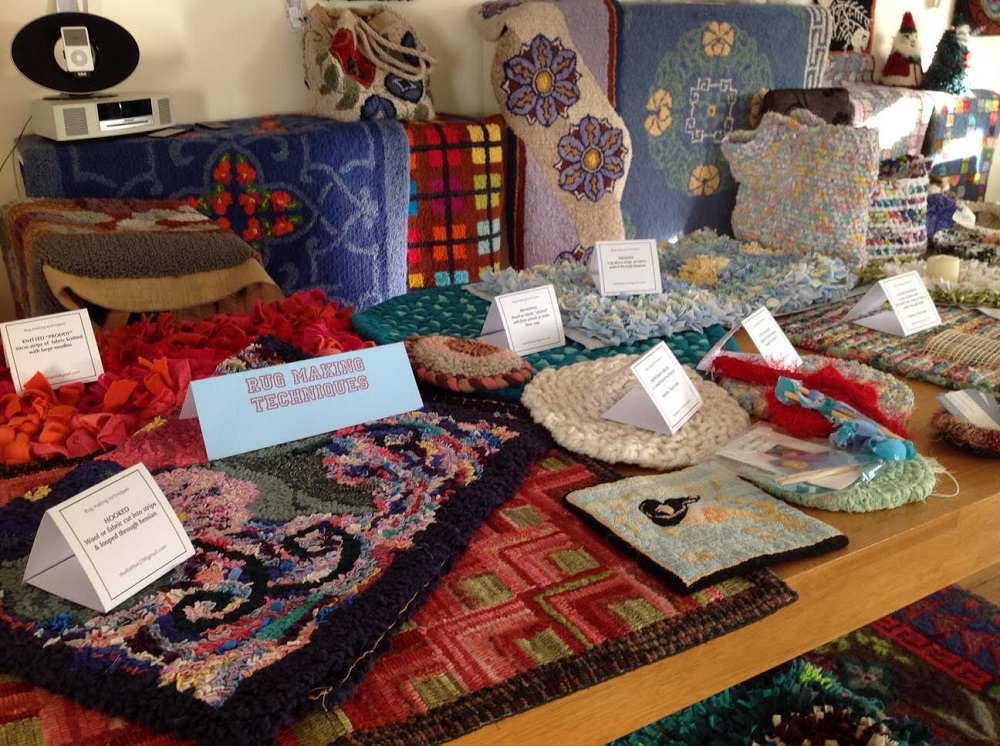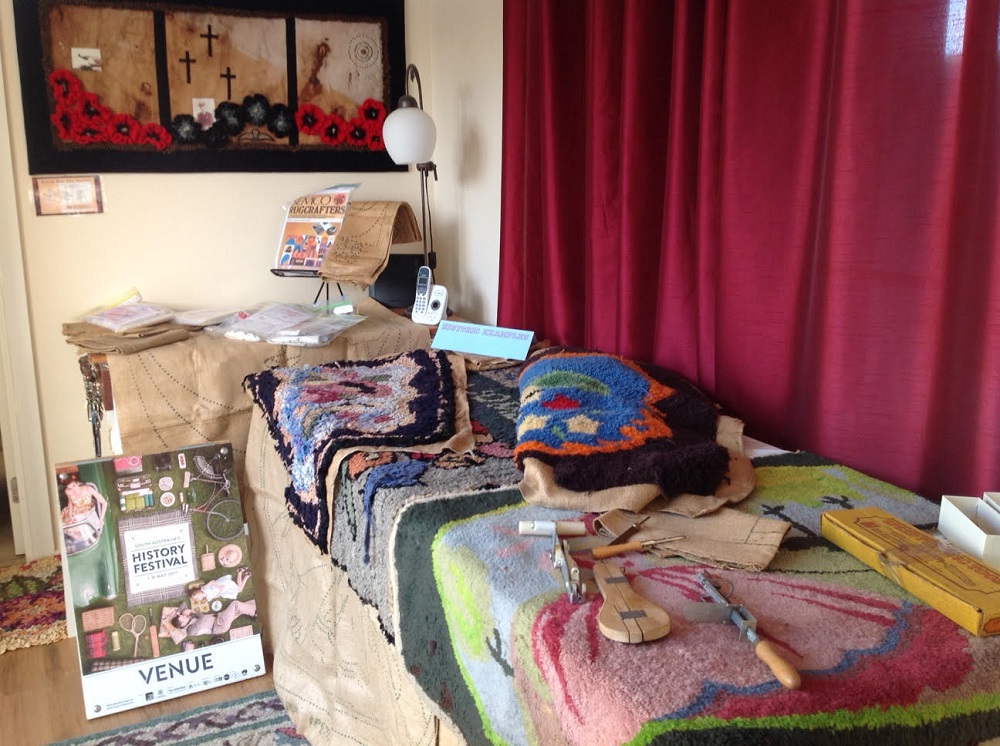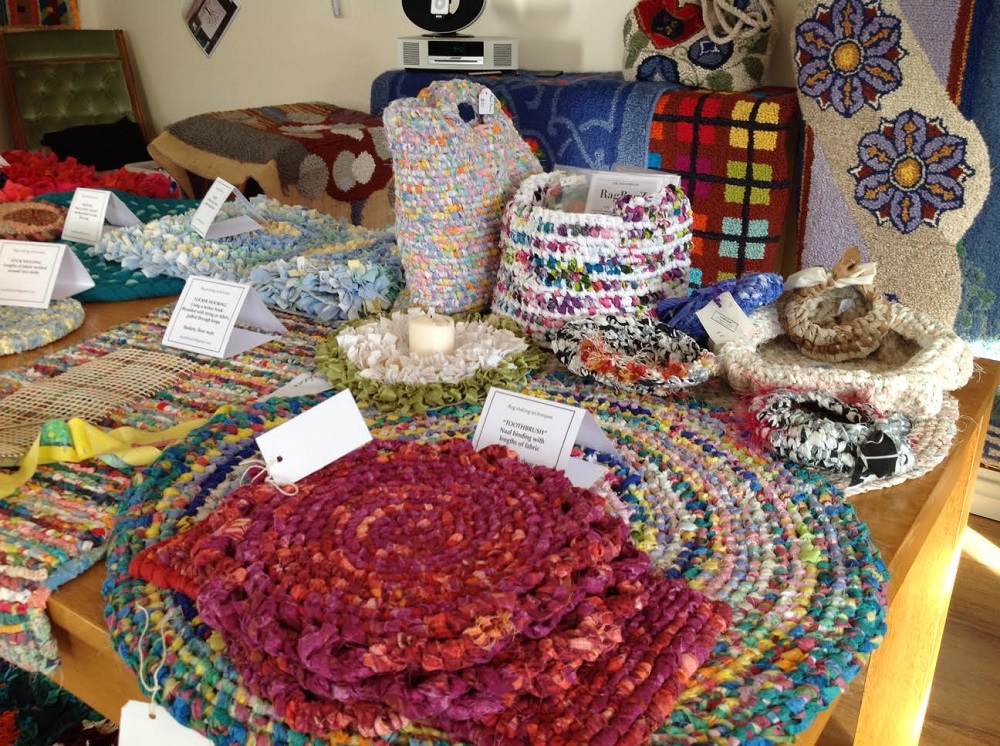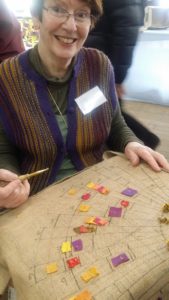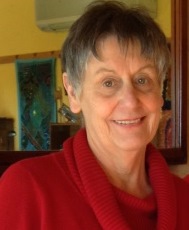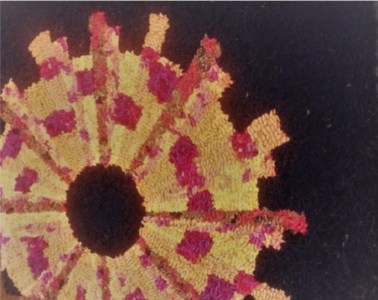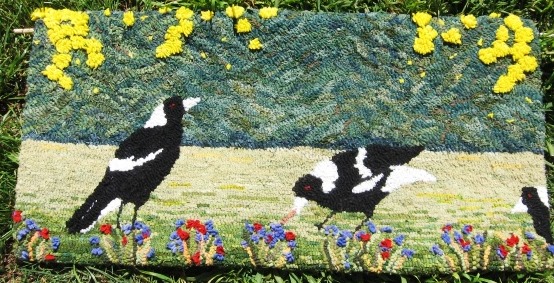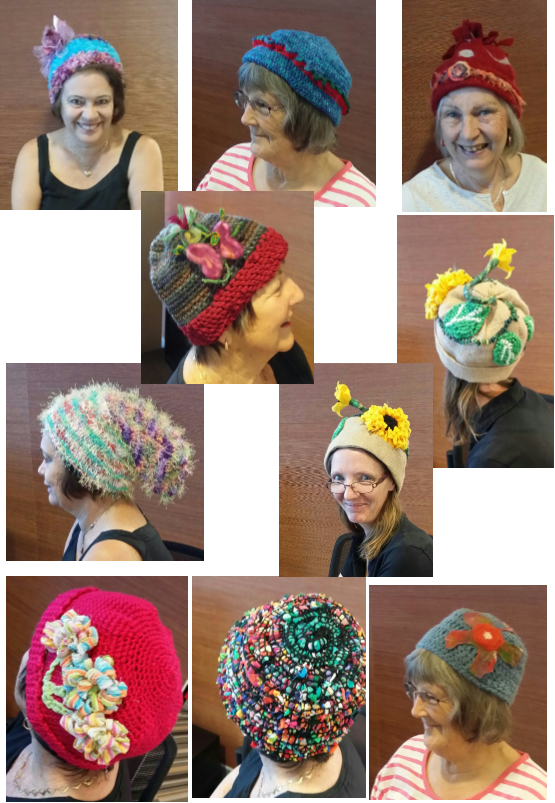ISSN 2007-001X March 2018
2018 – off to a good start – locations of the growing number of Rugmaking Groups around Australia were updated and are now detailed on the Current Events page.

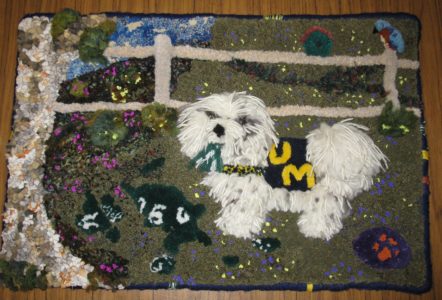
At the Winter Craft Festival June/July 2018 to be held at the Kingaroy Art Gallery, Judy Brook from the Red Earth Rugmakers and Judi Tompkins from the Sunshine Coast RugCrafters will demonstrate rug hooking and Judi T will give a “Waldoboro” rug hooking workshop.
Waldoboro is used to describe rugs hooked in a sculptured or 3-dimensional style. It’s a traditional technique named for the town of Waldoboro, Maine, on the north-east coast of the USA where rugs hooked in this sculptured technique (usually with floral designs) date back to the 1870-80s. Using the same technique and different materials, Judi has used this 3-D effect on many of her rug hooking projects depicting animals.
News from the Sunshine Coast RugCrafters …. Claudia from Brisbane recently visited a Sunshine Coast Group meeting at the Beerwah Library, seen here showing Stella her Emma Lou Lais pattern hooked on Monks cloth, and a “Memory Rug”.
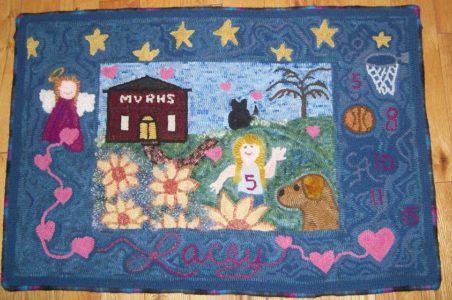
Speaking of “special rugs”
Gail Nichols from New South Wales has had EXCITING NEWS …. notification from Rug Hooking Magazine that her rug, ‘Temple Fish‘ was selected as a finalist and will be published in Celebrations 2018. See more of Gail’s amazing tapestries here

Also from New South Wales; Maxine’s group in Bellingen was featured in Miriam Miller’s recent newsletter, “Connecting Us”.
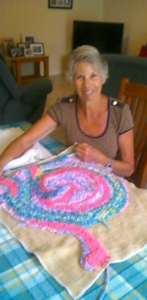
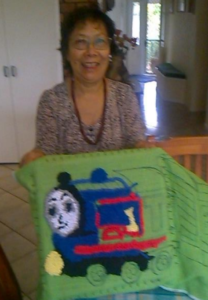

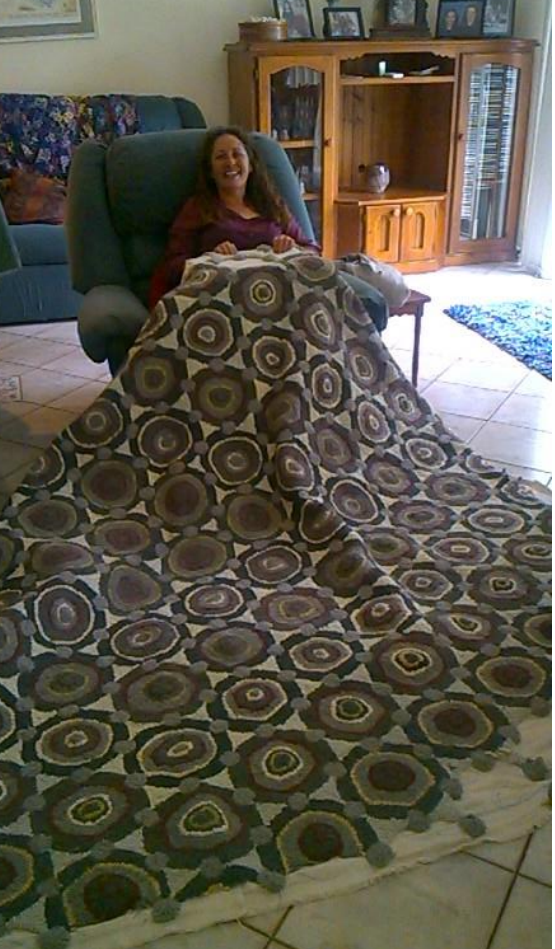
Closer to home …………………… Miriam reports the Milton Show was held on 2nd & 3rd March – The Theme this year was “Milk and Meat”.
 Janet and Elke, were stewards in the Proggy and Hooky Rug Section and arranged a roster of Rugmakers to demonstrate rug making and talk to the public during the two days of the Show.
Janet and Elke, were stewards in the Proggy and Hooky Rug Section and arranged a roster of Rugmakers to demonstrate rug making and talk to the public during the two days of the Show.
Sheila Capel, Christine Alexander, Judy Thurecht, Bev Latta, Elaine Kitchner, Ilka Landahl and Jacqueline Thomson were all awarded prizes in the various rug hooking categories.
All issues of “Connecting Us” can be found on the Guild website
Also, in New South Wales;
Margaret hooked images of her two Granddaughters from photographs of the girls. Margaret said …….
“FINALLY FINNISHED! these are my beautiful granddaughters. I have included the photos which inspired me to hook these pieces. I hope my work shows how beautiful the girls are, both inside and out – I love them very much.”
BIG rugs seem to be all the rage in New South Wales – in Braidwood Maggie Hickey finished hooking this large rug (2metres x 2.2 metres) comprised of eight separate pieces sewn together. The rug was designed and commissioned by artist Alison Alder, to fit her living room. Alison requested it be made in wool for durability.
Maggie said: “I planned it in 6 pieces but subsequently we decided it was going to be too short for the space. It was decided to add strips of lime green to either end. I used some wool yarn and some strips of wool blanket, dyed to obtain the required colours”
ACT – Canberra: Maggie Whyte, Australian Rugmakers Guild Vice Pres & Secretary, will be one of a group of Aussie Rugmakers traveling to Reeth, UK, to attend The International Guild of Handhooking Rugmakers’ (TIGHR) 2018 Triennial in the Yorkshire Dales village of Reeth, home of well known rug hooker Heather Ritchie, current President of TIGHR. 
Maggie, a felter as well as a rug maker,  is interested in many textile techniques.
is interested in many textile techniques.
Examples of her creations using a “Chunky Rugmaker” are shown with Maggie’s permission in the Technique pages of “Re-imagined” a Challenge with a Difference.
All 12 rug making techniques can be seen here. (Images are shown with permission of artists and photographers.)
Swap n Sell – this website page has been re-arranged so it’s easier to compare items. If you’re looking for wool fabric to hook with, a new member from Victoria has a huge stash which she’d like to sell. See more of the wool fabric available on this link.
Victorian Guild member, Marcia King, and rug hooking instructor, will be  demonstrating rug making on the 28th April at the Off the Grid Living Festival
demonstrating rug making on the 28th April at the Off the Grid Living Festival
in Eldorado, a town in the foot hills of the Alpine Ranges, between Wangaratta and Beechworth, just 3 hours from Melbourne and a little more from Canberra.
Also in Victoria, the Yarra Valley Rugmakers continue to meet in each other’s homes and hook rugs even on the hottest days of this past summer.
Chris said …. “Joy finished her third Psalm 23 stair tread ‘In the Valley’ and started whipping her rugs, being 3/4 finished on one rug by the end of the day. It’s amazing what you can achieve in a day.” You can read more about this group and contact them through their Blog 
Tasmania: The Happy Hookers have been posting some interesting latch hooked rugs on their Facebook page The group has a new meeting place; ART AS MANIA on Emu Bay Road, Deloraine
We’ve also been following artist Alyson-Jean’s progress creating a large latch-hooked rug of her own design – shown here with the artists permission.
“Magic Carpet” Click this link to see Alyson-Jean’s video.
South Australia; the Stationmaster’s Red Hen is the new home of the  StrathMatters rug group in Strathalbyn. The Red hen is a renovated train carriage sitting on the tracks next to the Stationmaster’s Art gallery housed in an historic railway building.
StrathMatters rug group in Strathalbyn. The Red hen is a renovated train carriage sitting on the tracks next to the Stationmaster’s Art gallery housed in an historic railway building.
The Rug Group meets on the 1st & 3rd Friday of the month. All look very comfortable in their new home – you can see more of their rug work on their blog
Currently showing in the Stationmaster’s Art Gallery, is “Threads” – a fabric exhibition which includes furniture, wall hangings, AND rugs – this one designed and hooked by Judith Stephens, Guild President.
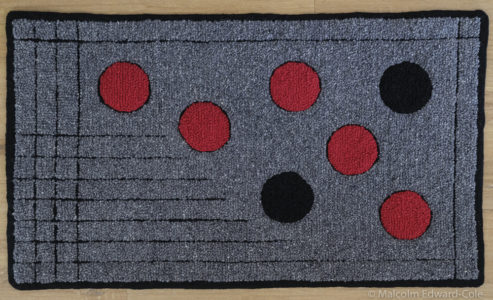
Gail shared a successful mending project ….. her rug made of polar fleece strips on latch hook backing had been damaged by a chair leg. A new piece of backing was spot glued onto the back and rehooked, mainly with the old strips. Gail was disappointed she couldn’t use recycled polar fleece but wanted specific simple colours; the blue/green – throws from Ikea and the yellow bought by the metre from Spotlight. All sliced with a rotary cutter.
on latch hook backing had been damaged by a chair leg. A new piece of backing was spot glued onto the back and rehooked, mainly with the old strips. Gail was disappointed she couldn’t use recycled polar fleece but wanted specific simple colours; the blue/green – throws from Ikea and the yellow bought by the metre from Spotlight. All sliced with a rotary cutter.
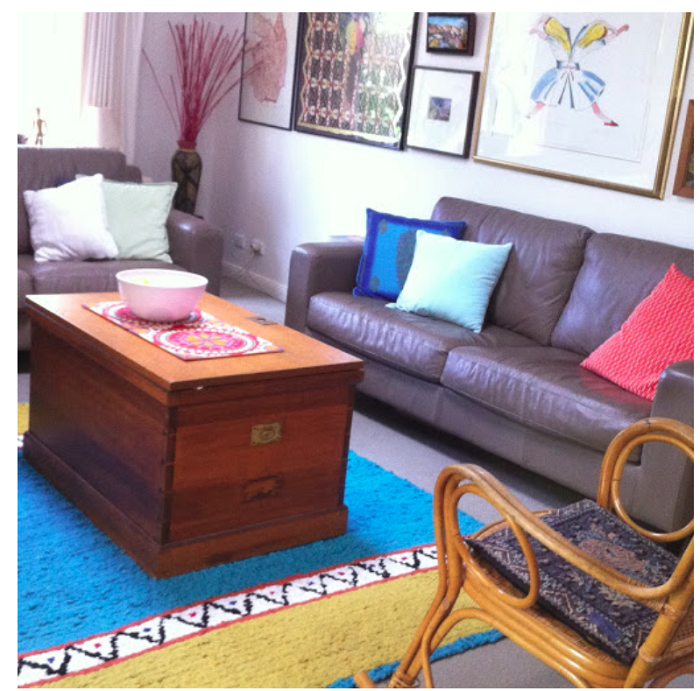
Western Australia; Learning a new technique at the Wanneroo Rugmakers  group – Melissa who’d lived in Japan for many years showed how to make Kanzashi (folded fabric) flowers, Margaret, the crafty gardener, caught on quickly (shown here) similar flowers are to be added to a “Re-imagined” Challenge creation.
group – Melissa who’d lived in Japan for many years showed how to make Kanzashi (folded fabric) flowers, Margaret, the crafty gardener, caught on quickly (shown here) similar flowers are to be added to a “Re-imagined” Challenge creation.

Robin Inkpen, visiting from Donnybrook in the South West of WA, demonstrated how to make coiled mats and vessels and displayed some of her creations. She also gave the group a punch needle hooking lesson on the newly constructed large punch needle frame with “plastic teeth” – both a #9 and #10 Oxford Punch needle were successfully used. It was thought that maybe the frame is too large? Amy Oxford has provided us with some helpful information which you can see on her FAQs page.
Sharon introduced the Wanneroo Group to the Uthando doll project  supported by knitting and sewing groups across Australia and showed a basket of dolls made by a group of teenage girls she supervises – helping others helps the girls. These images posted on the Guild Facebook page have created interest from as far away as Mexico.
supported by knitting and sewing groups across Australia and showed a basket of dolls made by a group of teenage girls she supervises – helping others helps the girls. These images posted on the Guild Facebook page have created interest from as far away as Mexico.
“Re-imagined” a Challenge with a Difference update …… 30 April 2018 is the deadline for submission of images of completed entries. Participants will be emailed a link through which they can upload their large images or videos, rather than send as email attachments ……… please make sure your email address is on file with rugcraftingaustralia@gmail.com to receive further emailed information.
There have been many inspirational posts on the “Re-imagined” Facebook page including images of examples by guild members, of the different rug making techniques listed on the Call for Entries.
A question asked recently “what techniques can be used in this Challenge?” the following answer was posted on the Facebook page ….
“Your entry can be created using whatever textile technique you desire, however, it must in some small way, include; have attached to; sit on or hang from; one of the rug making techniques listed in the Call for Entries.”
To refresh participants memory all 12 pages featuring examples of; braiding, quillies, coils, toothbrush and chunky rugmaking, proddy, stick weaving, traditional, punch needle, latch and locker hooking and tufting were shown together and can be seen on this link.
 From the Editor: Because of increased rug making activity across the country, this report was lengthy – I do hope you took the time to scroll to the end. In the future, Blogs will be shorter about specific groups or events. It’s hard to not mention all the groups rug making activities and gratifying to see where this traditional craft is taking members. Keep on sharing your creativity.
From the Editor: Because of increased rug making activity across the country, this report was lengthy – I do hope you took the time to scroll to the end. In the future, Blogs will be shorter about specific groups or events. It’s hard to not mention all the groups rug making activities and gratifying to see where this traditional craft is taking members. Keep on sharing your creativity. ![]()









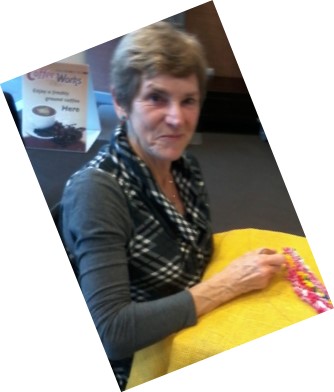


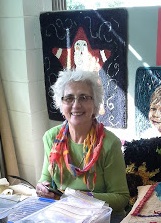

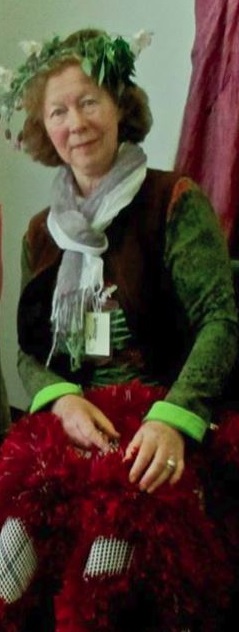
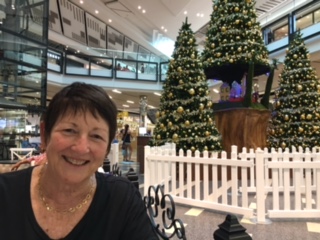


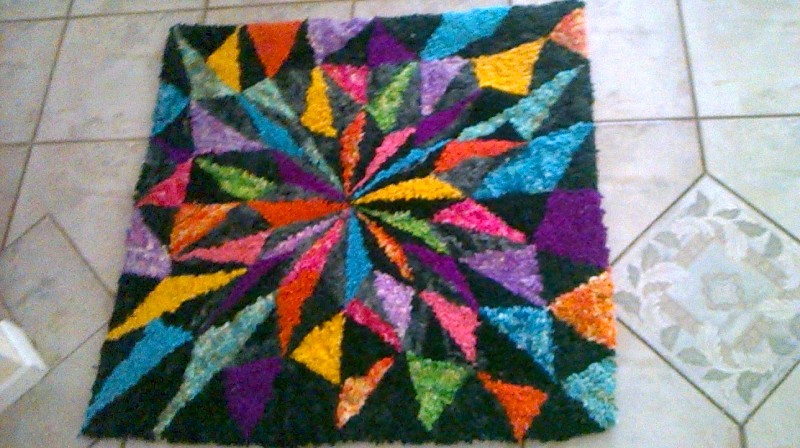
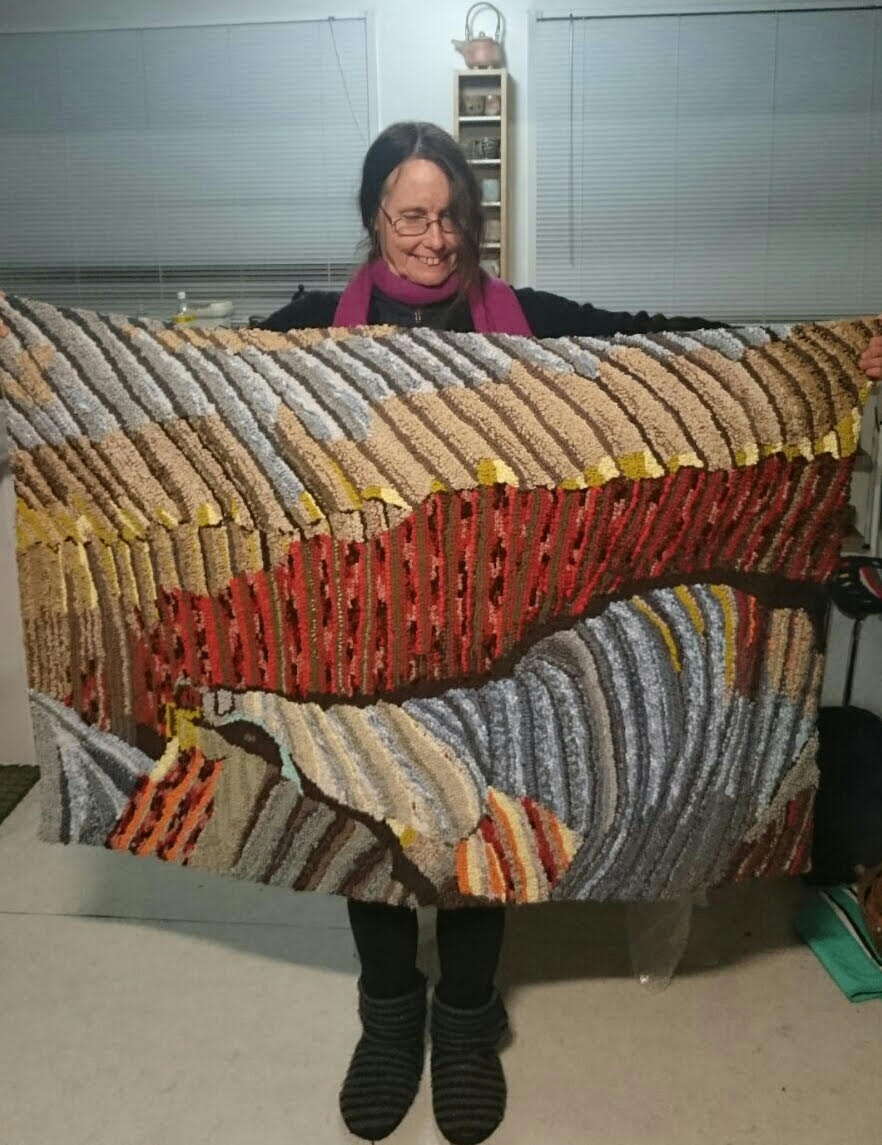
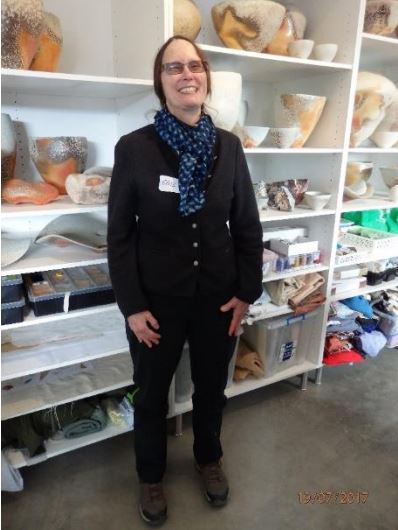
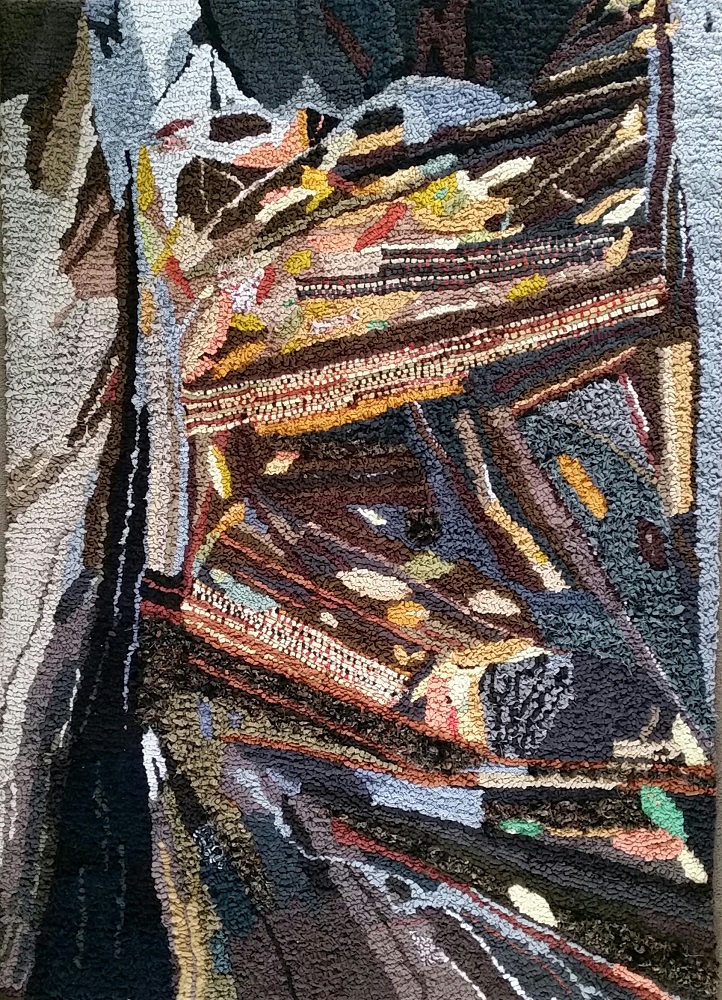
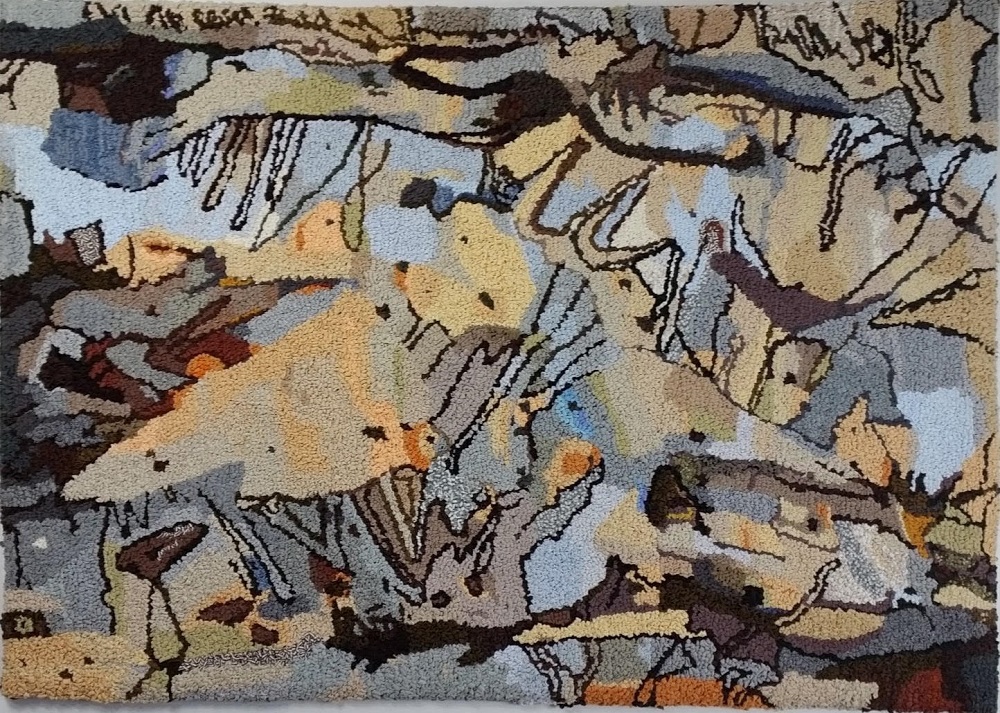


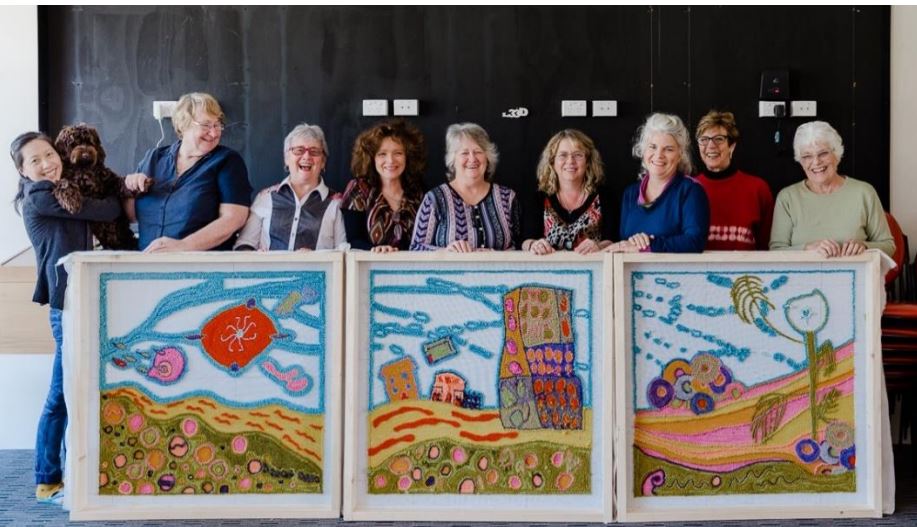








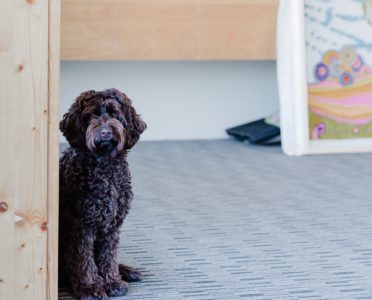
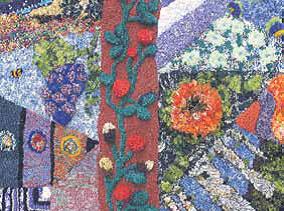
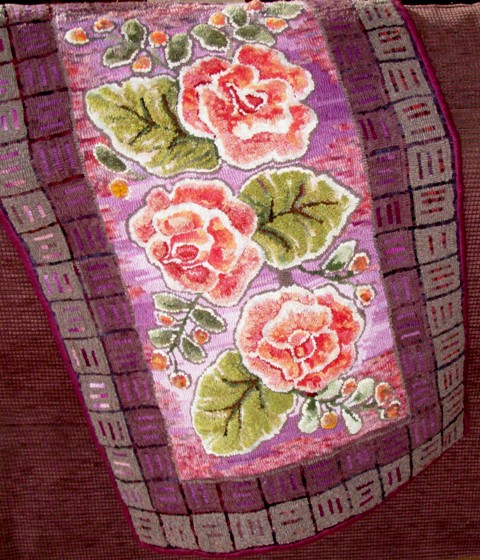
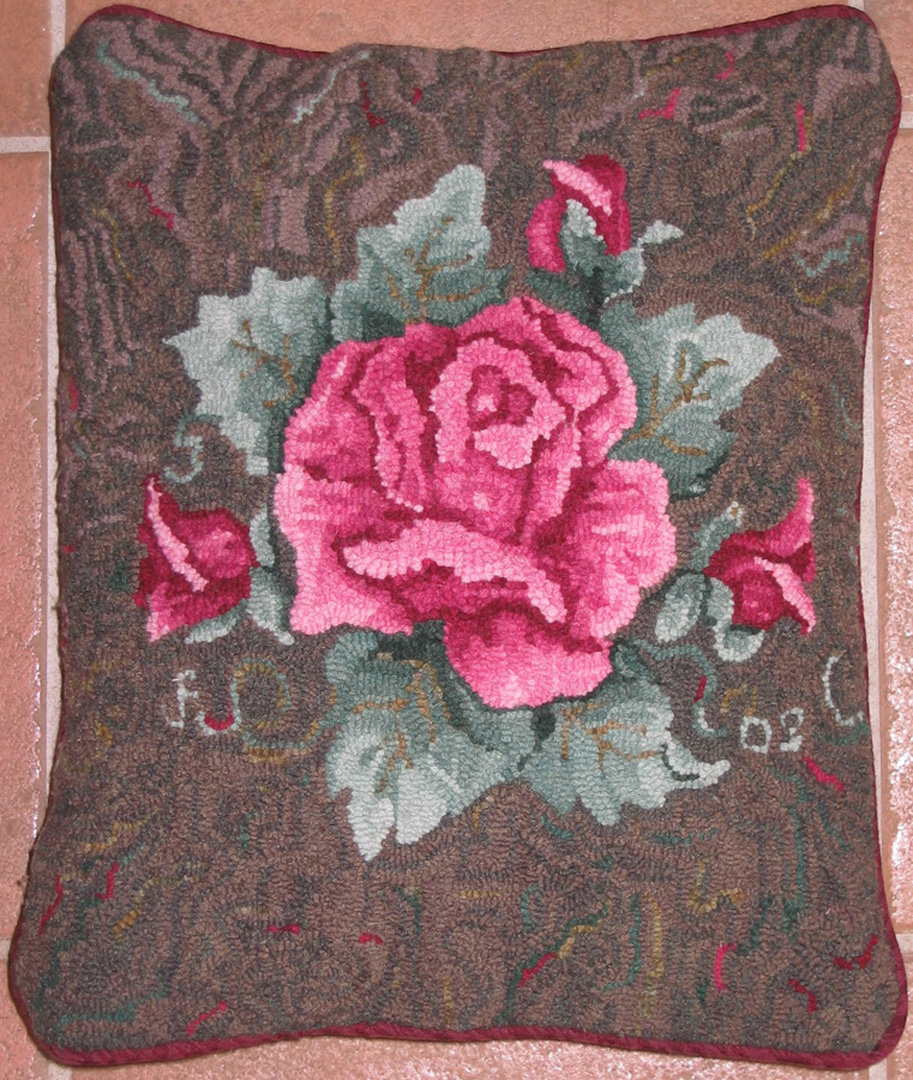
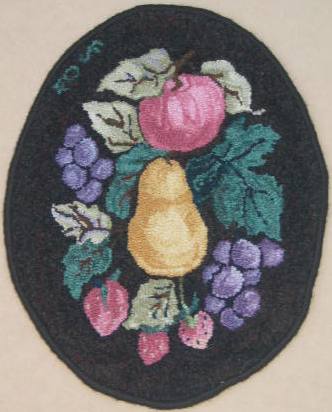
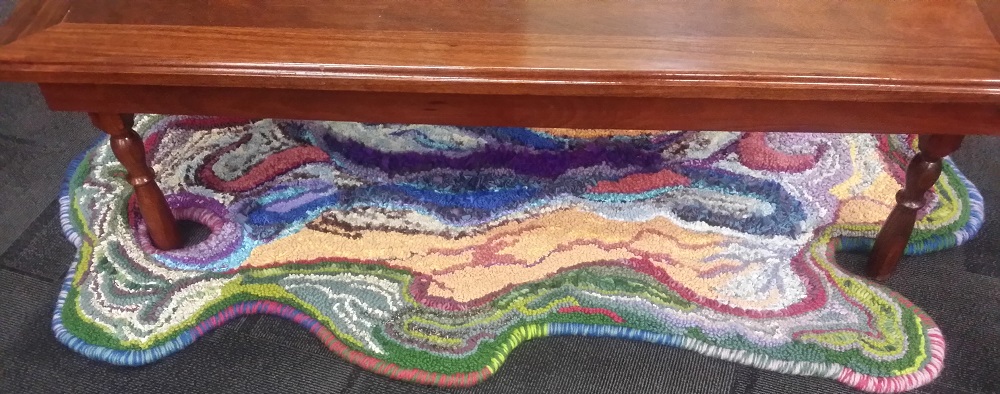




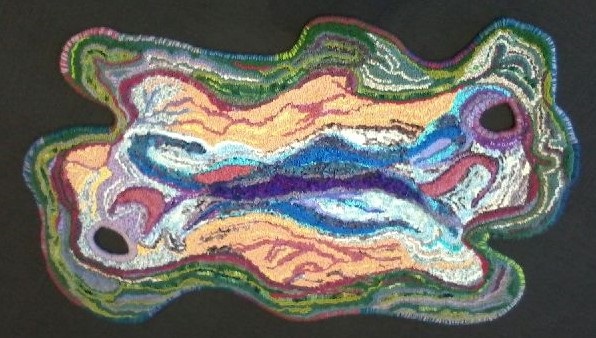
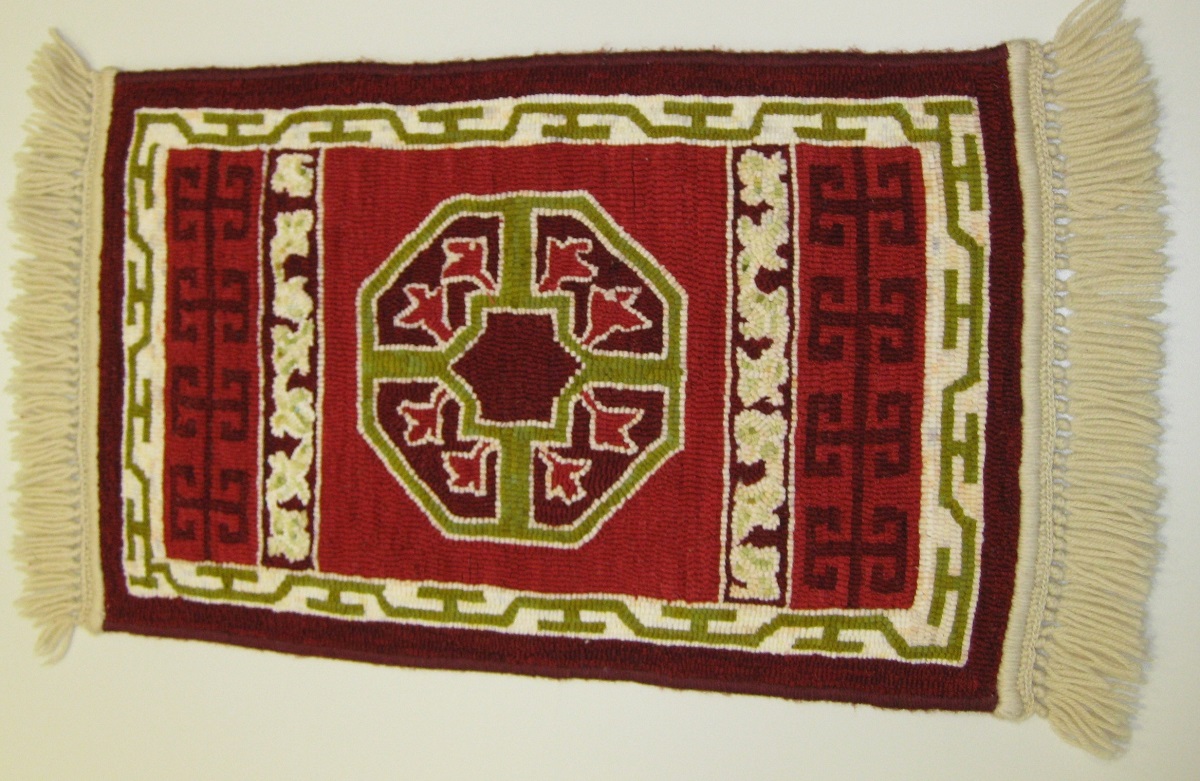
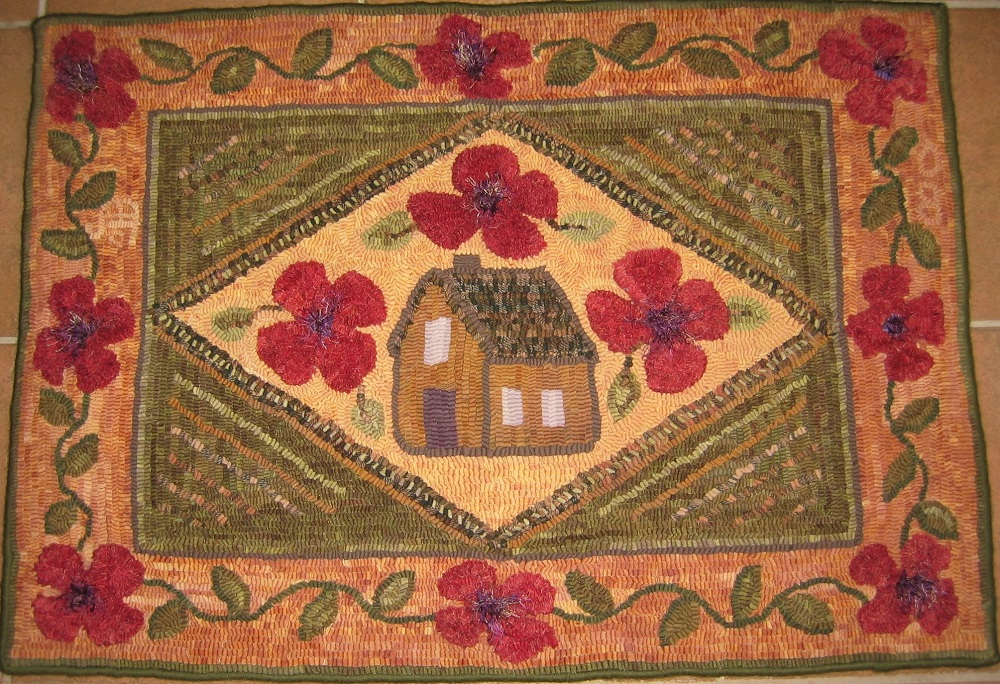

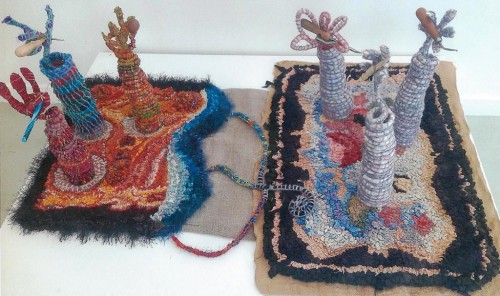
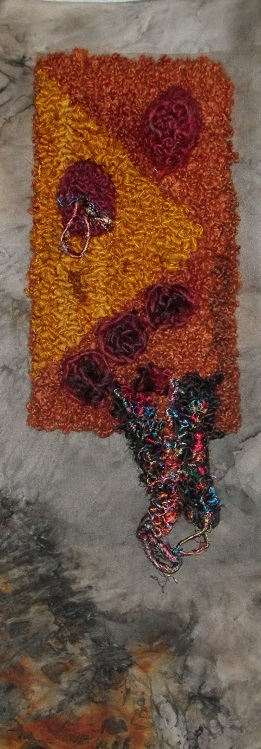
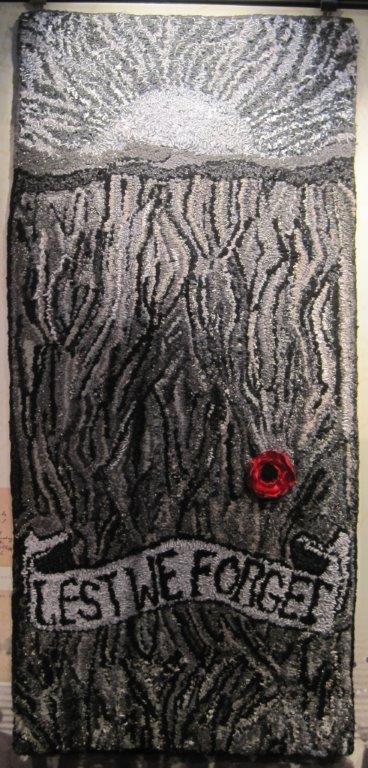
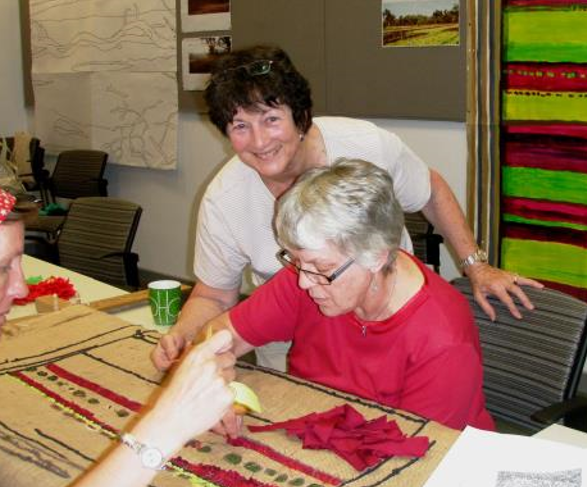



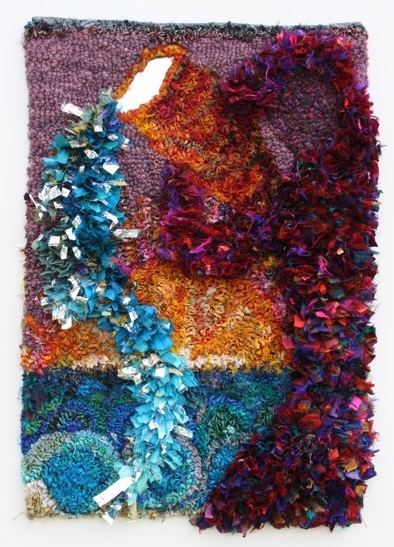
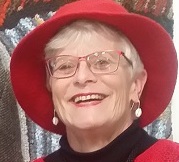
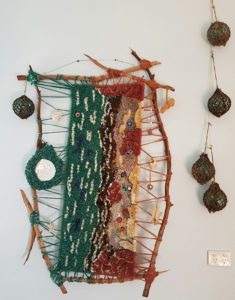


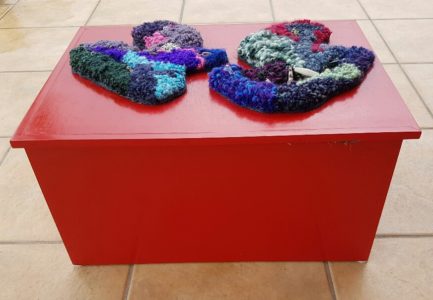

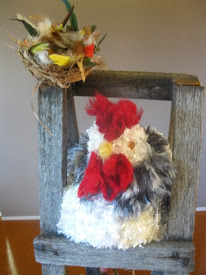

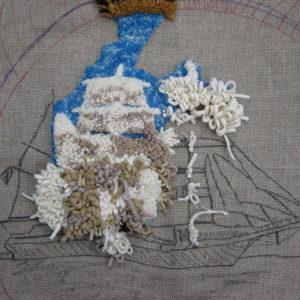
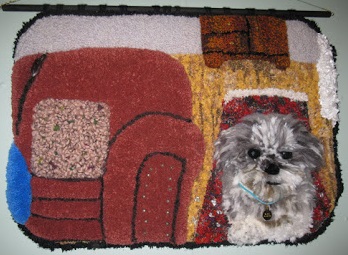

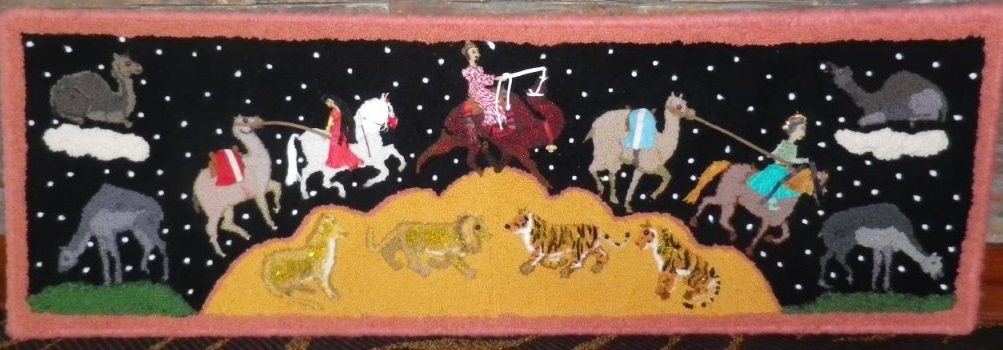


 Judy used bainia (Aran) wool, knitting and rug wool, dyed wool yarn, blanket, fabric strips and metallic thread to hook this piece.
Judy used bainia (Aran) wool, knitting and rug wool, dyed wool yarn, blanket, fabric strips and metallic thread to hook this piece.
